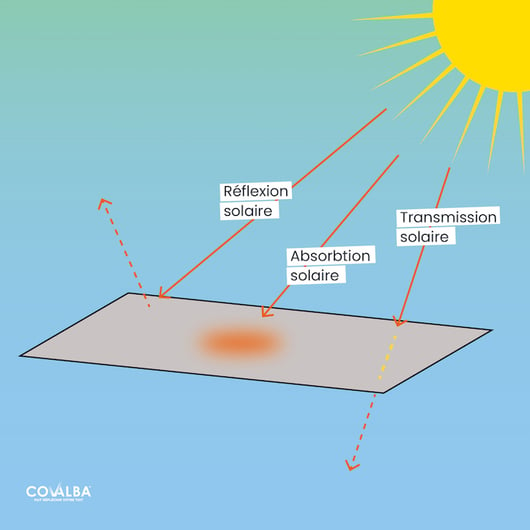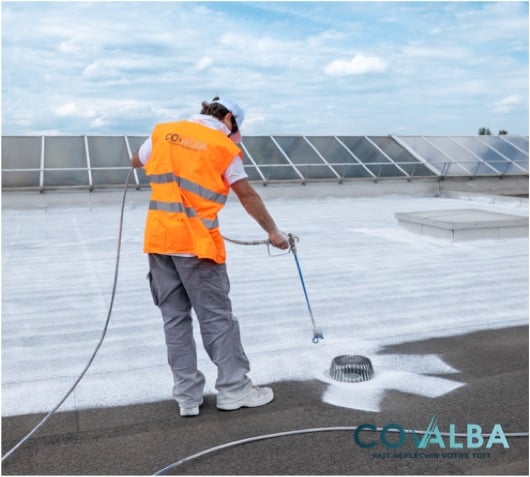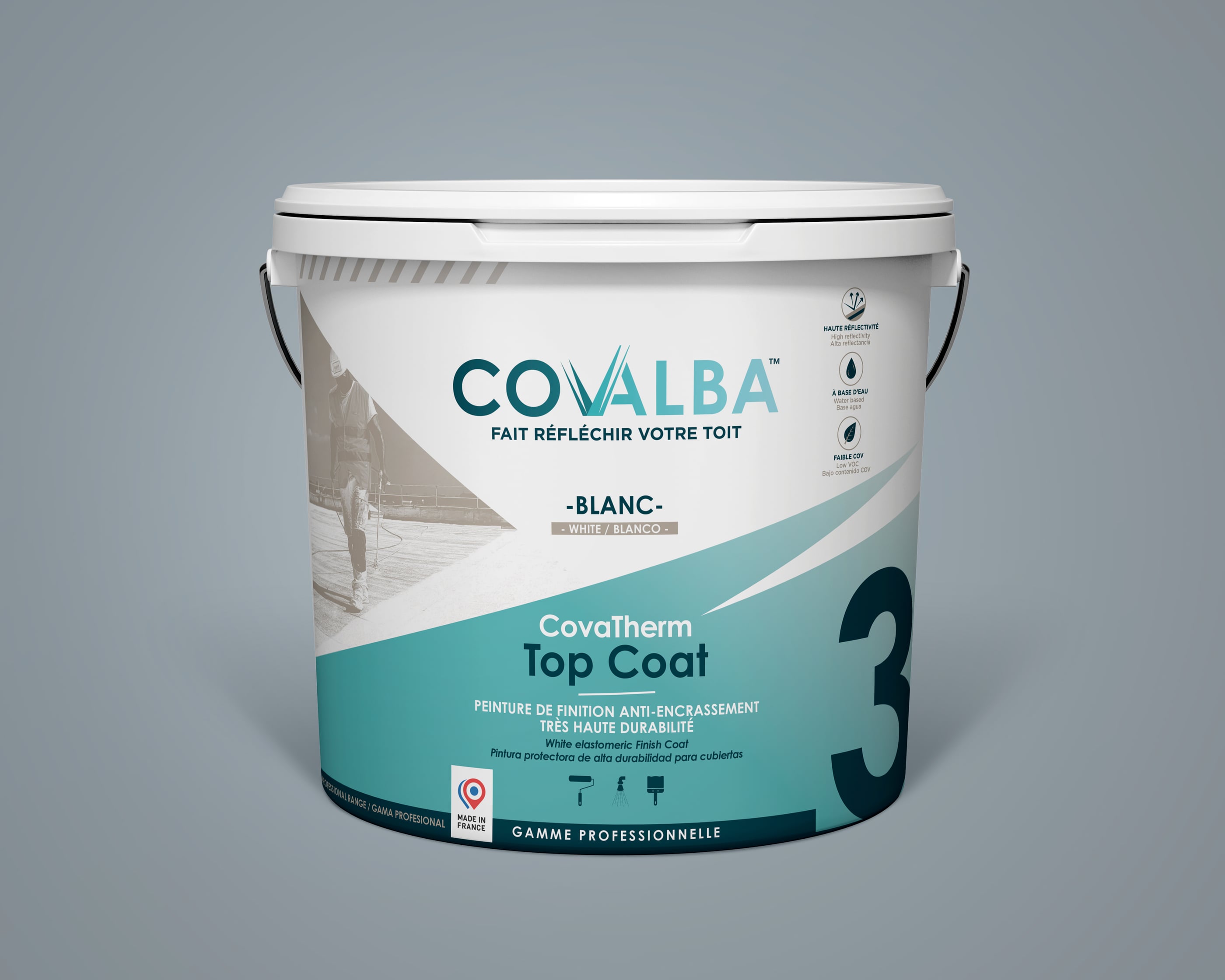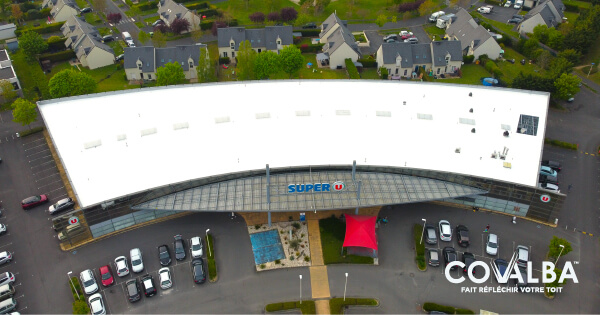In France, the market for waterproofing solutions is large enough to offer professionals a wide range of options. You'll find EPDM, PVC and bitumen membranes, each with its own advantages. However, when it comes to waterproofing a flat roof, there's one thing in common that brings all these different offerings together: the possibility of combining them with the application of a cool roof reflective coating. In this case, we're talking about a reflective waterproofing solution, as the coating is capable of reflecting the sun's rays.
What is a reflective waterproofing solution?
A reflective waterproofing solution is, as the name suggests, a solution that reflects the sun's rays. In most cases, when constructing a building with a flat roof, the protective membrane applied is dark in color: black or gray. Because of this color, which has a very low albedo, the cladding absorbs the sun's rays. This increases its surface temperature, as well as the temperature inside the building.

With this in mind, the reflective waterproofing solution consists in reversing the phenomenon by applying a white paint. This is achieved by using a white reflective paint with powerful reflective properties. This product is standardized according to several indices. Firstly, the calculation of its Solar Reflectance Index (SRI: ability to reflect the sun's rays) is measured via the ASTM E1980 standard. At the same time, the paint must maintain the roof's waterproofing properties. This second point is verified by standard NF EN 1062-3.

Covalba's CovaTherm paint has an SRI of 119. CovaTherm Top Coat reduces the rate of soiling by a factor of three, and preserves the roof's reflective properties for up to 20 years.

On which roofs can cool roof be applied?
The only criterion for applying a cool roof reflective coating is that the roof must be flat. If this is the case, then the roofing solutions used will be compatible.
Cool roof can be applied to all conventional protective membranes. Whether these are made of EPDM, bituminous materials such as SBS or PVC, it's possible to switch to reflective waterproofing.

Thanks to its great adaptability to all types of roof, cool roof can be applied to a very large proportion of buildings in France. This method is particularly well-suited to the commercial sector, which can then move ahead with its commitment to the energy transition. Small shops, educational establishments and supermarkets can all benefit from reflective waterproofing.
💡 Explore all waterproofing techniques and products
What are the advantages of reflective waterproofing?
The transition from conventional cladding to reflective waterproofing induces numerous advantages for professionals and private individuals alike.
First and foremost, this solution makes a significant contribution to reducing greenhouse gas emissions, since by protecting the roof from absorbing the sun's rays, it is possible to save up to 10 degrees Celsius inside the building, thereby reducing the need for air conditioning. By reducing their energy consumption in this way, professionals can make an effective commitment to CSR.
In addition, by limiting the use of air conditioning, energy bills can be drastically reduced. In the long term, reflective waterproofing is an economical solution. The return on investment of this method is attractive, as reflective waterproofing can last up to 20 years.
Finally, this solution also helps combat the urban heat island effect. This phenomenon, sometimes referred to by the acronym ICU, refers to a heat dome over cities, created by the presence of numerous buildings and large concreted areas that prevent heat from circulating. Buildings with dark roofs contribute greatly to this effect, as they massively absorb the sun's rays. By switching to reflective waterproofing, you can reduce your impact on this effect and fight global warming on a local scale.
To find out more